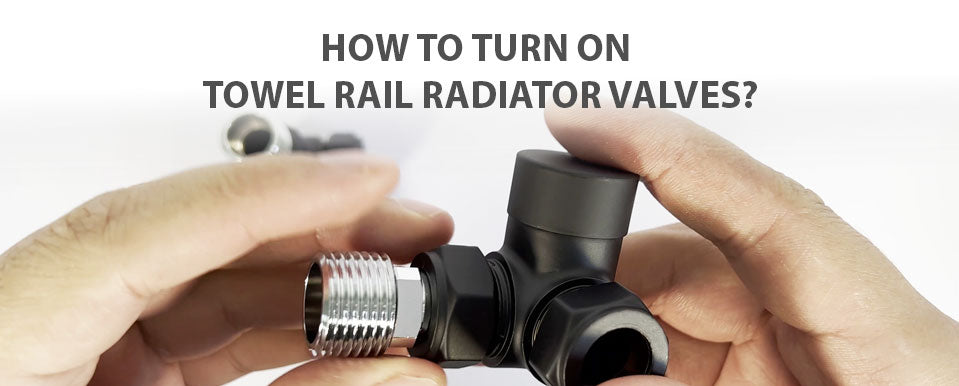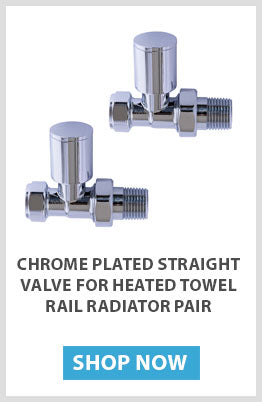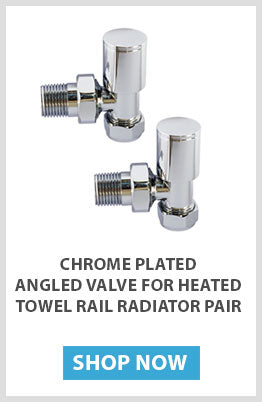How to Turn On Towel Rail Radiator Valves: Quick and Easy Steps

How To Turn On Towel Radiator Valves? Humans tend to concentrate on things we don't understand. Since the bottom of your towel rail radiator has two valves, it is understandable if you're questioning why and what the valves are for. To quench your need for knowledge, we've dug deep into the towel radiator universe and crafted this short that explains the function of these valves and provides you with knowledge about how to turn on your towel rail radiator and its explanation.
What are the 2 valves on a radiator
Radiator valves, a typical fixture in houses across the United Kingdom, are essential for controlling the heating effectiveness of radiators. These two valves are the lockshield valve and the thermostatic radiator valve (TRV), which are frequently found at the base of the radiator. By altering the hot water flow into the radiator, the TRV is intended to regulate the room temperature. Because of this valve's user-friendly design, people may easily set the temperature they want. In contrast, a heating engineer adjusts the lockshield valve, which is usually protected by a plastic covering, to balance the heating system. By distributing the proper amount of hot water to each radiator in a house, balancing maximises energy efficiency and lowers heating expenses.
Why do your towel radiator's valves come in pairs?
The two valves on your towel radiator allow you to manage the flow of hot water and the quantity of heat it emanates.
- One valve controls the rate at which hot water enters the towel radiator.
- The other valve regulates the rate at which hot water exits the radiator.
What is the purpose of two valves on your towel radiator?
One of the two valves on your towel radiator is often a lockshield valve, while the other is a wheel head valve or, in some instances, a TRV. The lockshield valve typically regulates the amount of hot water entering the radiator. The LSV controls the flow of hot water, which also ensures that the operation of the towel radiator won't compromise the efficiency of other radiators in your house.
In contrast, the wheel-head valve controls the amount of heat the towel radiator emits. This valve on a towel radiator aims to regulate the radiator's temperature. Adjusting the wheel head valve counter-clockwise will increase the flow of water through the radiator, increasing its temperature. Similarly, moving it clockwise will reduce the temperature of the radiator.
Types Of towel rail radiators to choose from:
Many different styles are available, and you can choose which one suits your towel rail radiator for example, the minimalist valves are more suited to the modern designer towel rail radiators.
Just be sure that you know precisely the position of your pipework and how you will fit the valves to the radiator.
There are three radiator valves: manual, thermostatic, and lockshield. Here is some information regarding rail radiator valve kinds;
- Manual radiator valves:
The simplest type, manual radiator valves, are typically compared to a bathroom faucet; twist the top to adjust the radiator's temperature. Due to the absence of internal complexity, manual valves are typically smaller than their counterparts, making them an ideal choice for a minimalist radiator or room design.
- Valves for thermostatic radiators:
Thermostatic Radiator Valves are sophisticated equipment that can make all the difference in maintaining the ideal temperature in your rooms. They contain a sensor that is sometimes electrical but is typically a tiny bit of wax or a heat-sensitive liquid. When your radiator's temperature reaches the required level, this sensor expands to stop the passage of hot water via the valves, thereby regulating the temperature.
- Locking radiator control valves:
The lockshield valve will always complete the pair, whether you pick manual or thermostatic radiator valves. As a crucial safety feature, these regulate the water flow and pressure traveling through the radiator to maintain its equilibrium. They are especially beneficial for vertical radiators, which require more significant pressure to push water up and down.
Should the valves of the radiator be fully open?
A conventional heated towel rail or towel radiator is meant to be activated and deactivated by the central heating system. If the value of your rail radiator is fully open, the maximum amount of hot water will enter the radiator. This provides heat to the rail to reach the desired temperature for the entire central heating system. You can adjust the valve if you want the towel radiator to be at a lower temperature than the rest of the central heating system.
Manual valves give less user control than thermostatic and intelligent valves. When changing a manual valve, you must check the radiator after the heating has been turned on and have had time to warm up to determine the effect of your adjustment.
How do you turn on and off a towel rail radiator?
To turn off the towel radiator, you must first turn off the central heating system and then let the towel radiator cool. Adjust the valves by turning them in the direction you would ordinarily turn them to lower the temperature. It should be shut off when you can no longer turn the radiator. Restart your central heating system to ensure you haven't turned it in the wrong direction. If your towel radiator does not heat up as it typically would, the towel radiator has been effectively shut off. To reactivate it, contrarily turn the valve and ensure it reaches the desired temperature while the heating is on.
Which Way to Turn Towel Rail Valves
To operate the towel rail valve efficiently and safely:
- Identify the Type of Valve: Before making any adjustments, identify whether you have a manual or thermostatic valve.
- Turn the Valve: For manual valves, turning the valve counterclockwise will open it, allowing hot water to flow, while turning it clockwise will close it, stopping the flow. For TRVs, the process might be slightly different. Usually, TRVs have numbered settings, with higher numbers allowing more hot water to flow, resulting in a warmer towel rail.
- Test the Temperature: After adjusting the valve, touch the towel rail carefully. If it's warm, the water is flowing correctly.
How To Turn On Towel Rail Radiator Valves FAQs:
How to manage a towel rail radiator?
You must first switch off the heating system and wait for the towel radiator to cool before turning it off the towel radiator. Turn the valves in the direction you would usually turn them to lower the temperature to adjust them. When you can no longer turn the radiator, turn it off.
How should radiator valves be positioned?
TRVs, or Thermostatic Radiator Valves, are fitted to the radiators on the opposite side of the lockshield valves in many contemporary homes. Always install a TRV on the input of the radiator and an LSV( Lock shield valve ) on the outlet.
How do I adjust the heat on my towel rail radiator?
To adjust the heat on your towel rail radiator, locate the valve at the bottom or side of the radiator. Turn the valve to increase or decrease the flow of hot water. If your radiator has a thermostatic valve, you can set a specific temperature.
What should I do if my towel rail radiator is completely turned off?
If your towel rail radiator is completely turned off, ensure that both valves (inlet and outlet) are open. Turn them counterclockwise to open fully. If it remains cold, you might need to bleed the radiator to remove any trapped air.
How can I manage my energy bills when using a towel rail radiator?
To manage your energy bills, consider installing a thermostatic valve on your towel rail radiator. This will allow you to set a specific temperature, preventing the radiator from overheating and wasting energy. Additionally, make sure to turn off the radiator when not in use.
What is the function of a thermostatic valve on a towel rail radiator?
A thermostatic valve on a towel rail radiator allows you to set and maintain a desired temperature. This helps in efficiently regulating the heat output, ensuring comfort and energy efficiency by preventing excessive heating.
Where are the valves located on a towel rail radiator?
The valves on a towel rail radiator are typically located at the bottom, but they can also be on the side of the radiator. Check both the bottom and side to locate the inlet and outlet valves.
How do I turn on a radiator with a thermostatic valve?
To turn on a radiator with a thermostatic valve, rotate the valve to the desired temperature setting. If the radiator does not heat up, ensure the valve is not stuck and that the boiler is functioning correctly.
Why is my towel rail radiator not heating up even after turning the valves?
If your towel rail radiator is not heating up, check if the boiler is working properly. Ensure that both valves are fully open and the thermostatic valve is set to a higher temperature. You might also need to bleed the radiator to remove any trapped air.
Can adjusting the valves help reduce my energy bills?
Yes, adjusting the valves can help reduce your energy bills. By using a thermostatic valve and setting it to an optimal temperature, you can avoid overheating and reduce unnecessary energy consumption.









